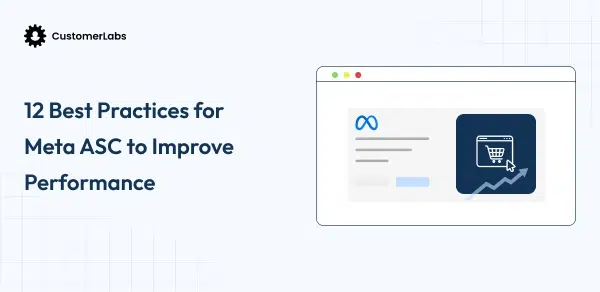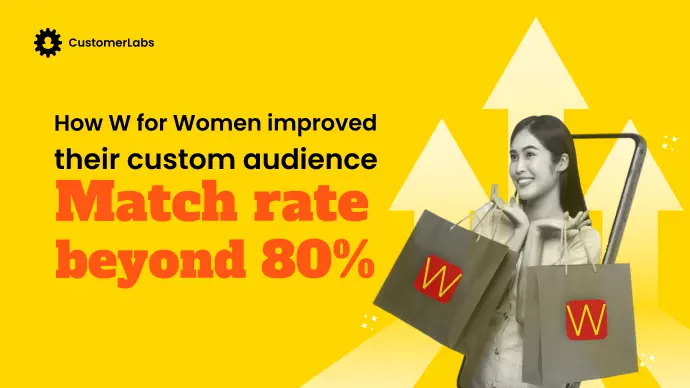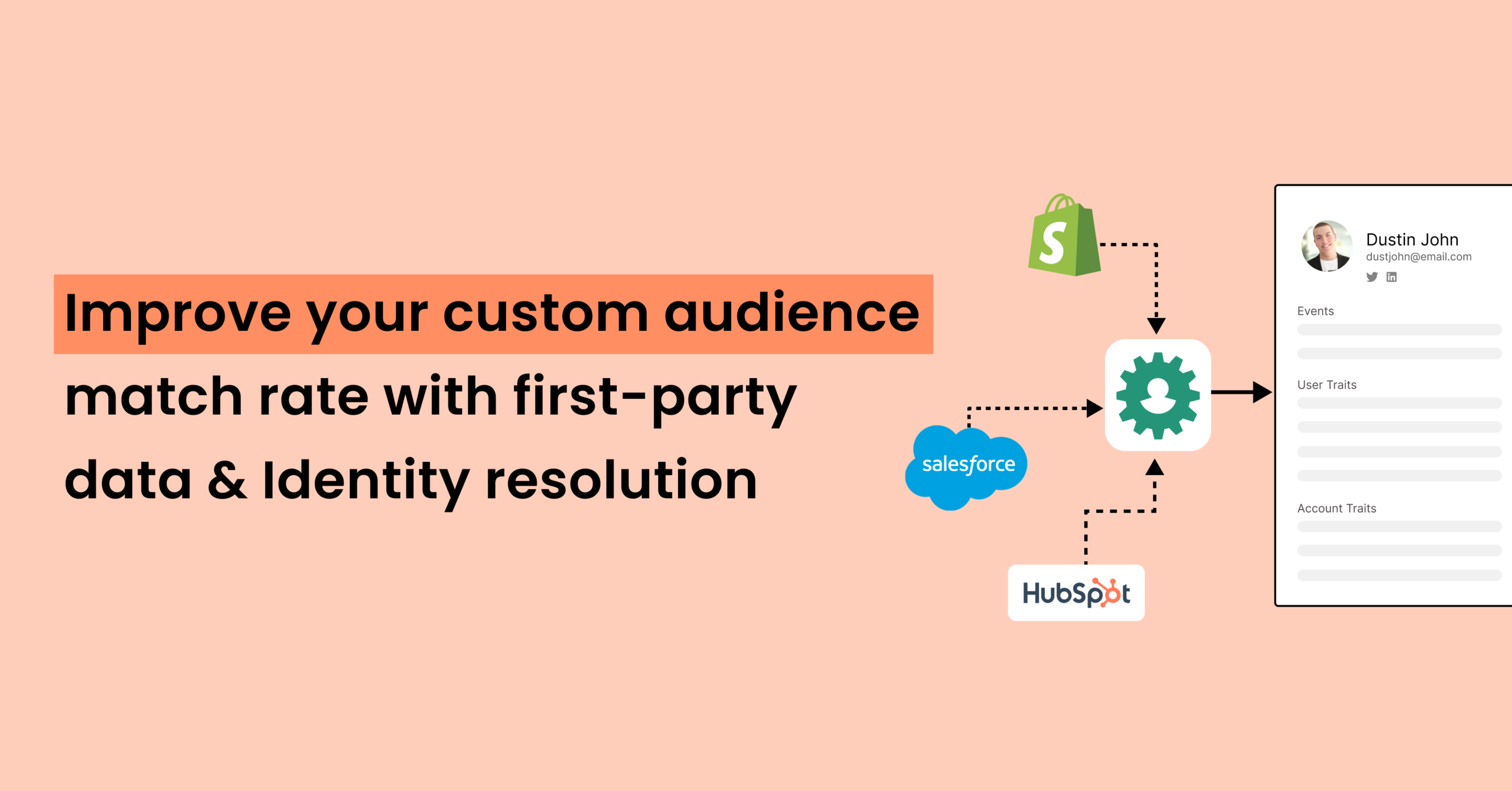Low custom audience match rate that leaves you and your business clueless…..?
Even though you’ve got the customer list, the budget, and the strategy, Facebook still struggles to find your best customers.
But not to worry, there is a fix. You can improve your custom audience match rate using first-party data (1PD). Yes, the solution lies in your own data, as simple as that.
1PD actually helps Facebook to find your real customers, thereby increasing your customer audience match rates.
First-party data = no more wasted on ad spend, better retargeting, and better ROAS.
This blog will walk you through practical ways to improve your match rate and achieve better conversions. We’ll also cover the setup steps and best practices that can help you boost your Facebook Custom Audience match rate and real-world experiments.

What is Facebook Custom Audience Match Rate and How is it Calculated?
Custom audience match rate is the metric that shows inside your Ads Manager. This metric indicates how effectively Facebook can identify your customers from the list you upload. The percentage of matching the uploaded list to its own ecosystem is known as the Custom Audience match rate.
It is important because it lets you target people who already know your brand, making your ads more relevant, cost-efficient, and conversion-focused.
Let’s look,
How does the Facebook custom audience match rate process work?
So here’s how it works:
First, upload the customer data (email address, phone number, first name/last name).
After sending the data, Meta will hash the data using SHA-256 to protect the customer information.
Now, Facebook will compare the hashed values you sent with the user data in its own database. Later, Facebook compiles all the matched users into a custom audience. This is how Meta works behind the scenes.

How to Calculate Facebook Custom Audience Match Rate?
Facebook custom audience is calculated by dividing the number of users Facebook successfully matches from your uploaded customer list by the total number of entries in that list, then multiplying by 100.
Formula:
Match Rate = (Matched Users ÷ Total Uploaded Users) × 100
Example:
If you upload 10,000 customer emails and Facebook matches 7,000 of them to existing user accounts, your match rate would be (7,000 ÷ 10,000) × 100 = 70%.
Now, let’s move forward to know why it matters.

Why Facebook Custom Audience Match Rate Matters for Ads & ROAS?
(Assuming that you already know the aftermath of having a lower match rate)
Why do you run ads? To target the right customer, isn’t it?
So when having a high match rate, it highly influences the people who see your ad.
Imagine with an 85% match rate, your ads target a majorly of the relevant audience, and 15% might be irrelevant.
Basically, the higher the match rate, the higher the probability of real customers seeing your ads.
So the more relevant people see your ads, the probability of them clicking your ads and converting is extremely high, which means more conversions, better ROAS, and campaigns that perform the way you expect.
Before we jump into the fix, let’s understand why match rates are low. Dive deeper to know what the root causes are for the low match rate.
Why are Facebook Custom Audience Match Rates so low?
Custom audience match rate can be very low for several reasons, like:
- Outdated or Incomplete data:
Using a single identifier, such as an email address. The user may use a different email address than you collected for business email.
- Data formation issues:
Maybe the country code in the phone number may be missed or the several capitalizations in the names.
- Tracking and privacy settings:
Due to privacy consent, new policies like GDPR, CCPA, and HIPAA have been introduced. Ad blockers, browsing settings, and iOS privacy updates can be filtered or blocked. Especially on client-side tracking.
- Limited data collection:
Completely relying on basic identifiers like names and emails without enriching the data can result in low match rates.
- Audience Size Restrictions:
Meta applies restrictions on the size of custom audiences, which can limit the effectiveness of retargeting campaigns
Now, you’ve got a clear understanding of what the causes are that result in low match rate, and let’s identify how 1PD will be responsible for improving your custom audience match rate.
How to Improve Facebook Custom Audience Match Rate with First-Party Data?
It’s simple: by providing rich, clean, and comprehensive data, you make your audiences more recognizable to Facebook.

First-party data matches the user more strongly than any other data (third-party data). 1PD has identifiers such as
- Browser IDs,
- External IDs,
- Click IDs,
- Facebook IDs,
- Google IDs, and
- IP Addresses.
- Phone number, etc
These identifiers help Meta’s Algorithm (Meta Andromeda) to learn these signals and target the user who matches in its Meta universe. On the other hand, third-party data lacks this, because you will track only a few identifiers, such as:
- Email address
- Gender
- Location
So, comparing third-party data with first-party data, it is clear that 1PD delivers better data, which in turn helps in training the algorithm with clean signals and improving the targeting and ad performance.
Proof will speak more than a theory. Let’s look into an experiment that we conducted using first-party data to improve the custom audience match rate.

How First Party Data Boosts Facebook Custom Audience Match Rate from 25% to 90%?
We decided to dig deeper and run some experiments… Obviously, we found that the iOS 14 update was one of the reasons why Facebook couldn’t match the audience, but beyond the iOS update, the GDPR / CCPA also started taking effect. The time has changed; now, Facebook isn’t a place to store your customer data, it’s just an advertising tool.
If you had a look into their recent data policy updates totally limit how the data is being collected and used for ads. For more details, have a read through this document by Facebook.
The same scenario applies to Google as well, with their latest announcement of completely phasing out third-party cookies from Chrome by the end of 2022.
Replicating Email Marketing personalization in FB
- Like email, when you want to engage and run an ad campaign for the users waiting for the XL t-shirt restock, or a campaign with an exclusive offer on their wish lists, or a campaign to push the users from added to the cart to purchase the product.
But the Facebook custom audience match rate sucks,
- At 1PD Ops, we wanted to engage our blog visitors who had been visiting our site since last November; we had around 16K+ users.
- We created a custom audience segment of the URL blog visitors on Facebook Audience Manager with a 180-day retention policy.
- Facebook could match only 4700 users, which is a 25% match rate, and we cannot personalize engagement when the audience is so low.

If we had to segment the audience into industry verticals to showcase relevant case studies, we’d end up with fewer than 1000 audience members, and eventually, ads wouldn’t run.
The power of First-Party Data – 90% match rates delivered.
The good thing was, we had our first-party data collected from last November. We figured out a way with our 1PD Ops to pass this segment to Facebook.
We created the segment with our first-party data and waited for a few days (3-7) for the audience to build.
And wham-bam!! That’s a 90% match rate out of the sample size of 16k+ visitors.

This is how we did it.
With Customerlabs 1PD Ops, we collected First-Party data without any help from developers.
So whenever a user visited our website, we had an opportunity to collect the data and store it in our database. In fact, every business should collect and store both known and anonymous visitor data along with their browsing history.
And when the user submits a form, makes a purchase, or shares their details, he/she become a known user. We can unify the data, and you can also activate unknown website visitors. Read more.
With 1PD Ops, we segmented them as a cohort like blog visitors. You can still do various segments/ categories like blog visitors, added to cart, High-Value users, abandoned cart, visited product twice, or various other custom segments based on the requirement.
After segmenting the blog visitor data, we synced the data with Facebook (similarly, you can sync the same segmented data to any other ad platform, like Google).
And the result, 90% match rate!!
These high match rates have increased our chances to reach our messages right in front of these people via personalized ads, just like emails, and bring them into the desired funnel to finally onboard them as customers
1PD Ops demonstrated that you can achieve a 90% match rate from a sample size of over 16,000 visitors. This significant improvement underscores the effectiveness of leveraging first-party data for audience targeting.
How to Create an Audience in CustomerLabs 1PD Ops
Here’s how you turn it into high-performing audiences for Facebook or Google Ads.
- Start With Your Audience
Click Create Audience and choose either a custom audience or a default e-commerce audience. This is your first step to making sure the right people see your ads.

- Filter Users the Smart Way
Narrow down your audience by individuals or groups, using properties like demographics, events, or UTM parameters. The goal is simple: show your ads to people who actually matter.
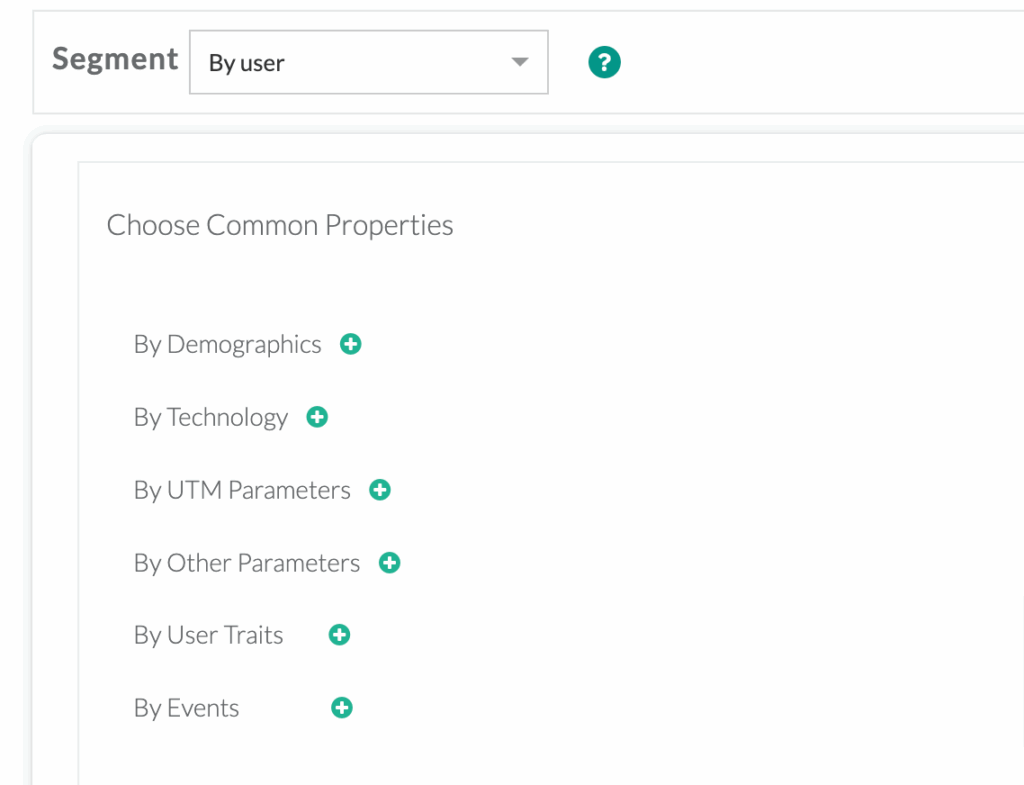
- Build Precise Conditions
For instance, you can select users who viewed a product but didn’t check out, set date ranges, and even combine multiple conditions. The more precise your filters, the higher the probability that your ads reach real buyers.
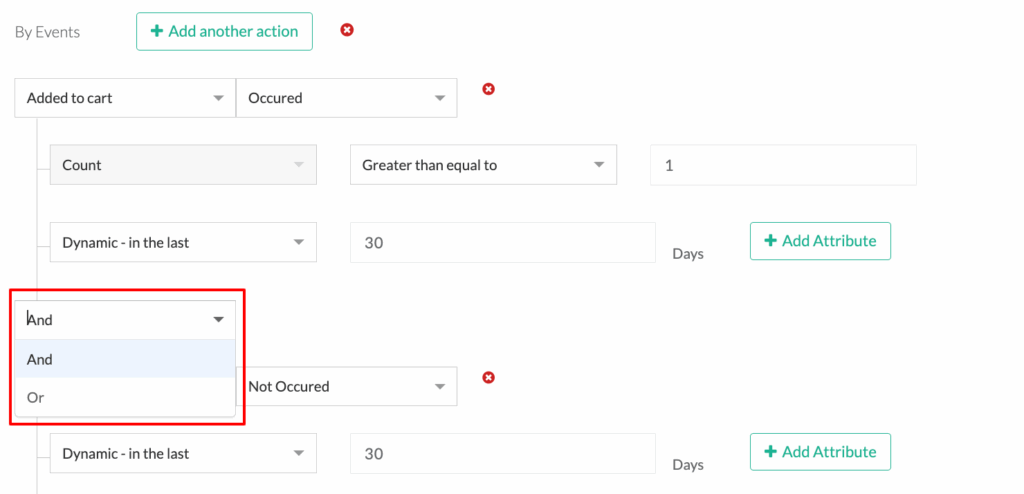
- Run, Save, and Activate
Click Run Query to see your matching users. Then save and activate the audience with a clear name and a refresh interval. This keeps your audience fresh and ready to perform.

- Sync or Manage
Once your audience is ready, you can sync it with destinations like Facebook or Google Ads or manage it as a draft or archive. This ensures your campaigns are always feeding from the most accurate, first-party data.

I’ve also included a document that guides you through the detailed steps for every filter that you want to apply.
Let’s complete this with a conclusion
Conclusion
First-party data (1PD) and 1PD Ops solve this by collecting clean, comprehensive data, resolving identities, and syncing enriched audiences with Facebook. This can boost match rates up to 80%, sharpen Custom and Lookalike Audiences, and drive better engagement, conversions, and ROAS.
Invest in 1PD, clean your data, and let your Facebook campaigns reach the people who truly matter. The wait is over, you can avail our 14-day free trial now and see the difference in the Facebook custom audience match rate improves like a skyrocket. Book a demo to get cleared with a call, even though it’s a simple problem that you’re facing, just hit it.
